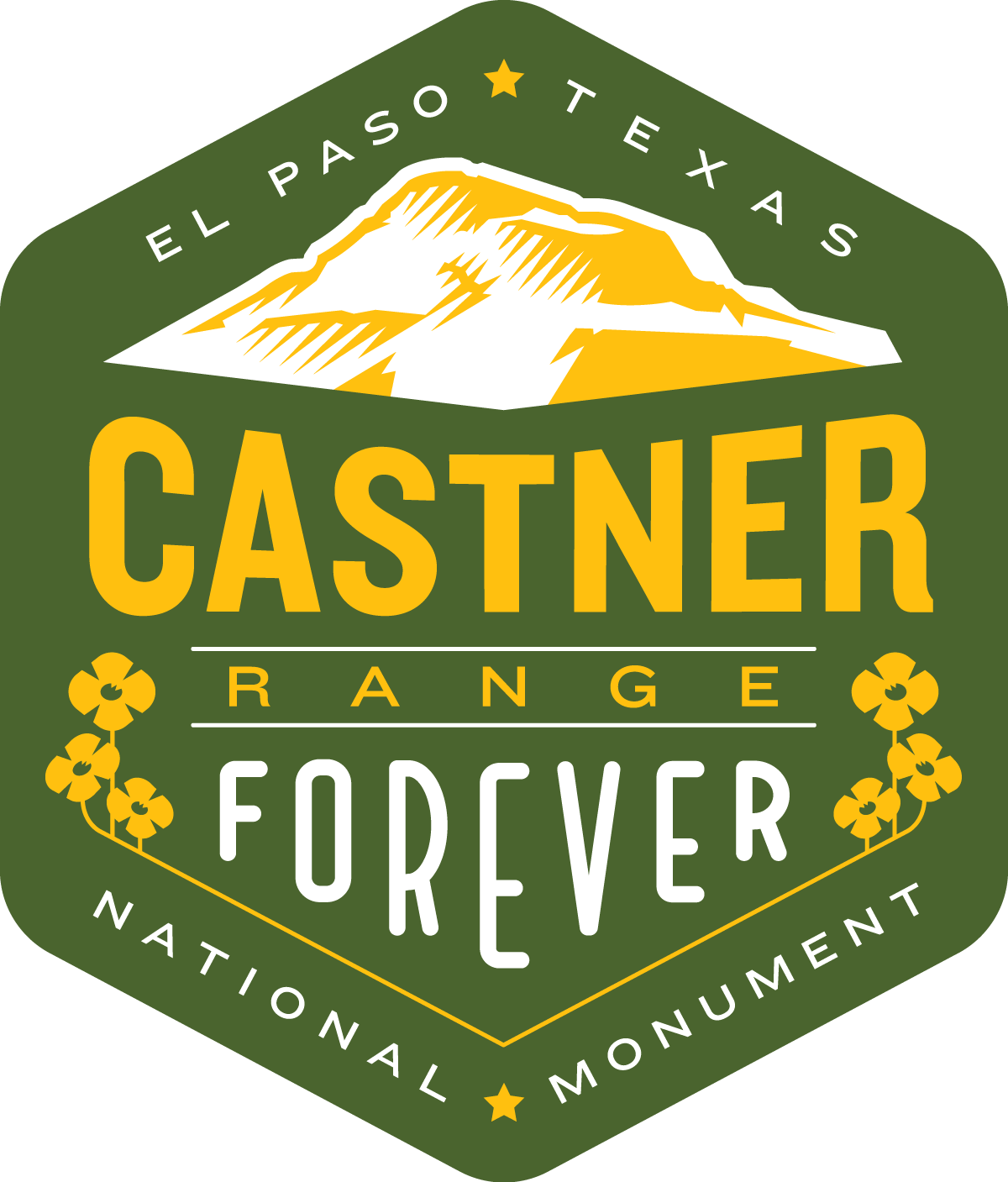
FAQs
-
The Franklin Mountains Range contains six peaks; its highest—North Franklin—rises 7,192 feet above sea level. The Franklins begin just east of downtown El Paso and just north of Interstate 10. Nearly 75% of the mountains, which run 17 miles north to the New Mexico state line, are conserved within the 40-sq.-mile Franklin Mountains State Park, created from mostly private property by the Texas Legislature in 1979 after 16 months of El Paso City Council negotiations. (The FMSP is America’s only state park surrounded by a municipality.) The remaining 25% of the Franklins fall within the over 6,600-acre/11-square-mile Castner Range National Monument, whose long western boundary is the State Park’s eastern boundary for several miles. The Range is a non-contiguous part of Fort Bliss, which along with the U.S. Army’s adjacent White Sands Missile Range, constitutes at more than 4,900 square miles the largest military base in the United States. El Paso lies at the furthest western end of Texas and directly borders on Ciudad Juárez, Mexico to the south and the state of New Mexico to the west and to the north. Located entirely within the 140,000-square-mile Chihuahuan Desert, El Paso’s climate is dry (annual rainfall 8”) with mild winters, windy springs, hot summers and temperate autumns. The Franklin Mountains rise from the desert and the views from—and of—the mountains are spectacular, especially from the broad alluvial plain at the eastern end of the Range and—just beyond—from the middle- and working-class “Northeast” neighborhoods
-
At the present time, people are not allowed on Castner Range due to the presence of MECs (‘munitions and explosives of concern’) and UXOs (‘unexploded ordnance’), but we’ve been told that will change in the forthcoming years. We are confident that a national monument designation is the best path forward to ensure that this national treasure is protected forever. It reflects our history and our future.
-
In El Paso there has long been a community effort to make Castner Range a National Monument. The Frontera Land Alliance, the Franklin Mountains Wilderness Coalition and the El Paso Community Foundation have been leading this effort. We had also been asking President Biden to declare Castner Range as a national monument through the 1906 Antiquities Act, which gives U.S. Presidents the authority to declare such monuments. Efforts had long been under way to gain local support from individuals, groups, business, veterans’ groups, etc., to show a diverse community support and a strong desire to conserve this land in perpetuity. Castner Range has significant ancient rock imagery sites, ancient cultural deposits, and historic military sites that are located on its over-6,600-acre property. The goal has been to establish Castner Range as a national monument so that it will be protected in perpetuity. Castner Range has exceptional scientific, cultural, ecological and geological attributes, along with beautiful waterways and historical values. To learn more, see our Castner Range National Monument report.
-
A National Monument designation keeps Castner Range the way it is for the enjoyment of current and future generations. It will ensure that the public can continue to enjoy these lands forever, and it will help the El Paso region maintain and expand upon a strong, diverse economy by protecting important open space and creating new opportunities for economic development through tourism and recreation.
-
Hiking
Guided education hikes
Photography
Birding
-
The Frontera Land Aliance
El Paso Community Foundation
Nuestra Tierra Conservation Project
El Paso Zoo
Barracuda P.R.
Hello Amgio
Castner Range Neighborhood Association


